History Shorts: Working on the River
The Fox Locks pre-date the Civil War, so there is a large body of historical information on the system. We are lucky to have an amateur historian on staff, and these are excerpts from Scott Thompson’s greater research into the system.
A brief history of boats cruising the Fox
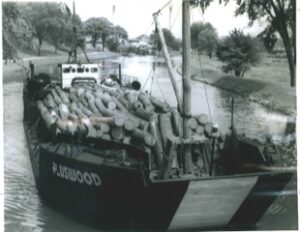 A boat built for combat was hauling logs from Canada on the lock system after WWII. According to an article in the Appleton Post Crescent from Sept 28, 1946, the PlusWood Company purchased such a craft. The LCT (Landing Craft -Tanks) was perhaps built for beach landings in Europe towards the end of WWII, but was never used in combat.
A boat built for combat was hauling logs from Canada on the lock system after WWII. According to an article in the Appleton Post Crescent from Sept 28, 1946, the PlusWood Company purchased such a craft. The LCT (Landing Craft -Tanks) was perhaps built for beach landings in Europe towards the end of WWII, but was never used in combat.
You can see the PlusWood working its way through the Kaukauna Locks in the photo below. We believe the view is downstream towards Lock #2 with a view of the lock tender house on the left side of the canal. Not many photos available of that house!
The history of the locks is intertwined with the boats that cruised the Fox River. In 1891, the tugboat christened as, “U.S. Lake Survey No. 1”, was soon renamed to honor Gouverneur Kemble Warren who was a civil engineer and Army general who fought at Gettysburg during the Civil War. The General G.K. Warren tug worked the lower Fox River and canals until 1920.
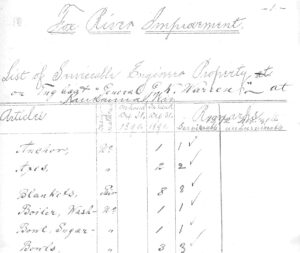 A few historical documents tell a story about the people working on these boats and what life on the river was like. A checklist of “Serviceable Engineer Property” was created when the General GK Warren tug was delivered to Kaukauna in 1892. The variety of items range from axes to blankets to sugar!
A few historical documents tell a story about the people working on these boats and what life on the river was like. A checklist of “Serviceable Engineer Property” was created when the General GK Warren tug was delivered to Kaukauna in 1892. The variety of items range from axes to blankets to sugar!
In 1904, Thomas Lee was classified as a “laborer” and this is his pay stub representing a day’s work on a canal boat working on the upper dam in Appleton. On additional forms his work description was, “Operation and care of canals and other Fox River Navigation” but look closely at his day rate of pay of $1.50.

Blog – Fox Locks
https://foxlocks.org/blog/history-shorts-working-on-the-river/

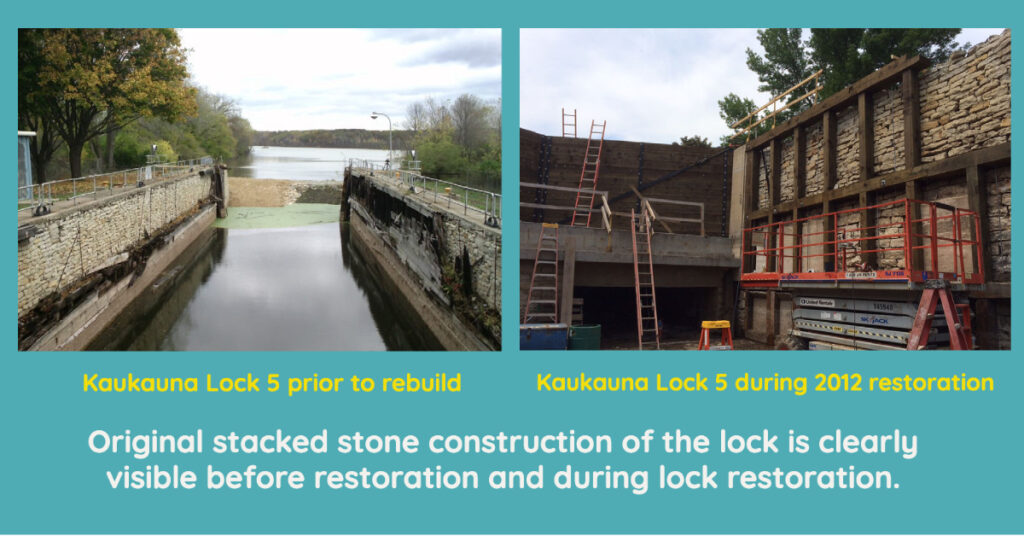
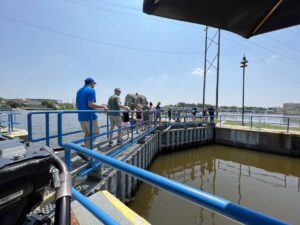
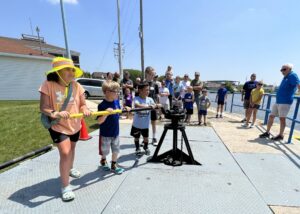

 The weekend of October 1&2 will be our final events for the 2022 season and we are hoping for great weather!
The weekend of October 1&2 will be our final events for the 2022 season and we are hoping for great weather!















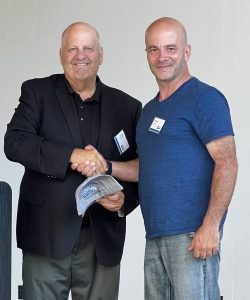
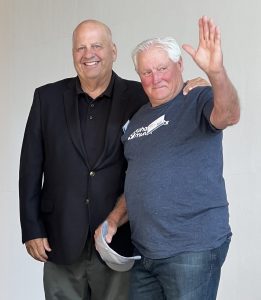
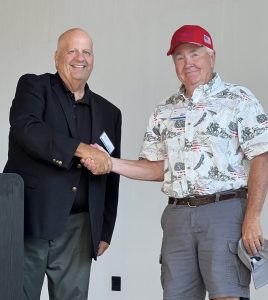
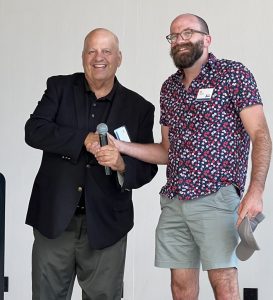


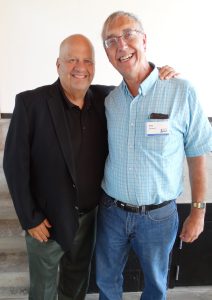


 The board of directors of the Fox River Navigational System Authority (FRNSA) has appointed Phil Ramlet as executive director of the organization. Ramlet recently retired from Westwood Professional Services, where he worked for more than 40 years on large infrastructure construction projects. For the last 15 years, he has consulted with FRNSA on property and construction issues for the system. He has been an active community leader serving in a volunteer capacity on the Community Foundation of the Fox River Valley’s Community Real Estate Personal Property Foundation, he served as chairperson of the Fox Cities Chamber of Commerce, chairperson of the Appleton Redevelopment Authority, and was a board member for both the YMCA of the Fox Cities and the Wisconsin Timber Rattlers.
The board of directors of the Fox River Navigational System Authority (FRNSA) has appointed Phil Ramlet as executive director of the organization. Ramlet recently retired from Westwood Professional Services, where he worked for more than 40 years on large infrastructure construction projects. For the last 15 years, he has consulted with FRNSA on property and construction issues for the system. He has been an active community leader serving in a volunteer capacity on the Community Foundation of the Fox River Valley’s Community Real Estate Personal Property Foundation, he served as chairperson of the Fox Cities Chamber of Commerce, chairperson of the Appleton Redevelopment Authority, and was a board member for both the YMCA of the Fox Cities and the Wisconsin Timber Rattlers.










